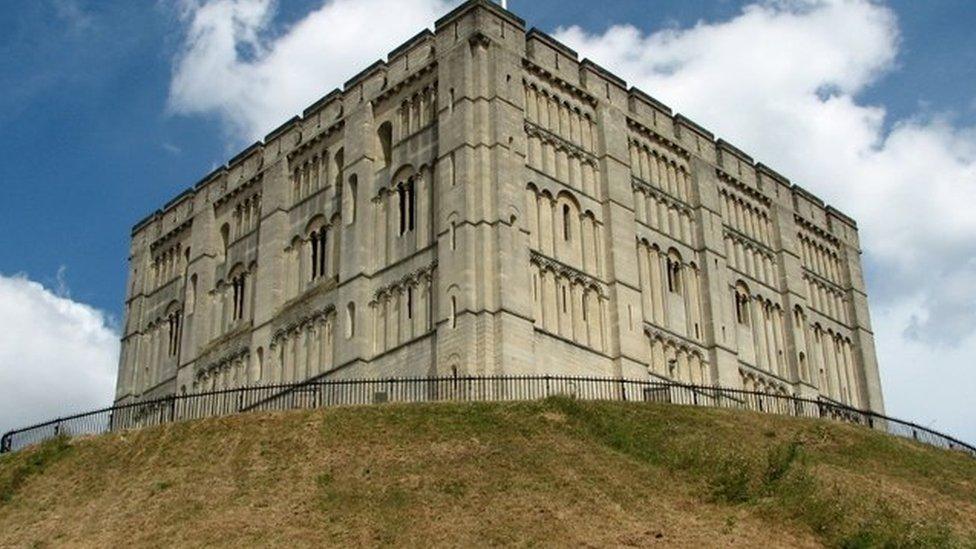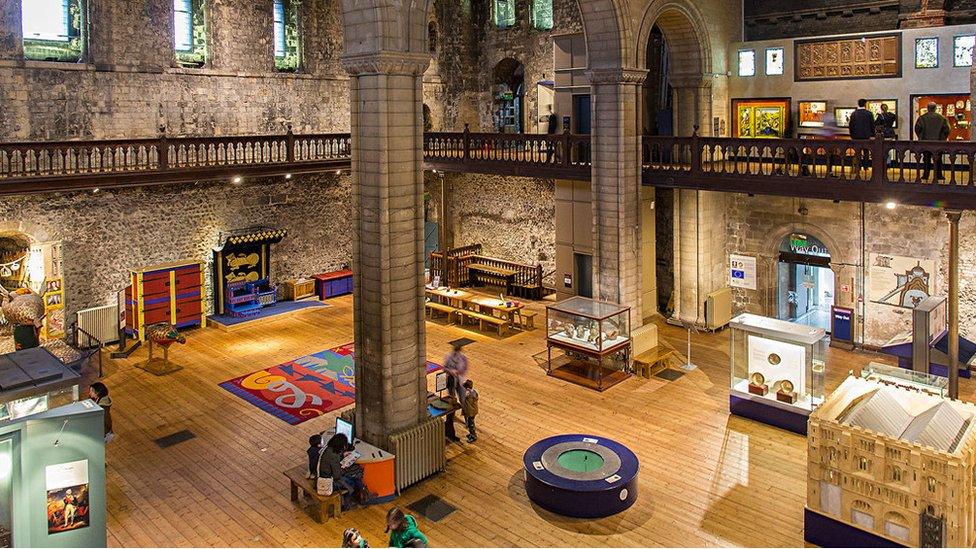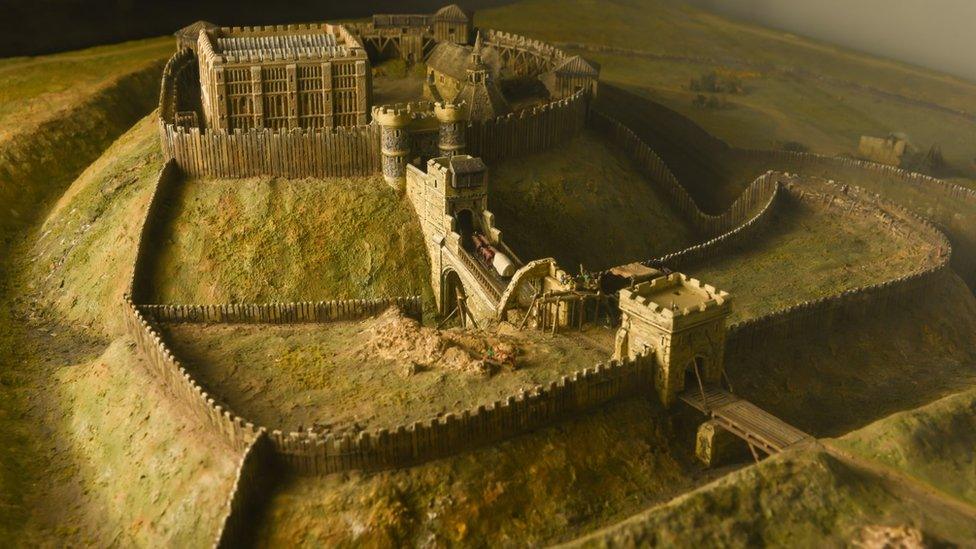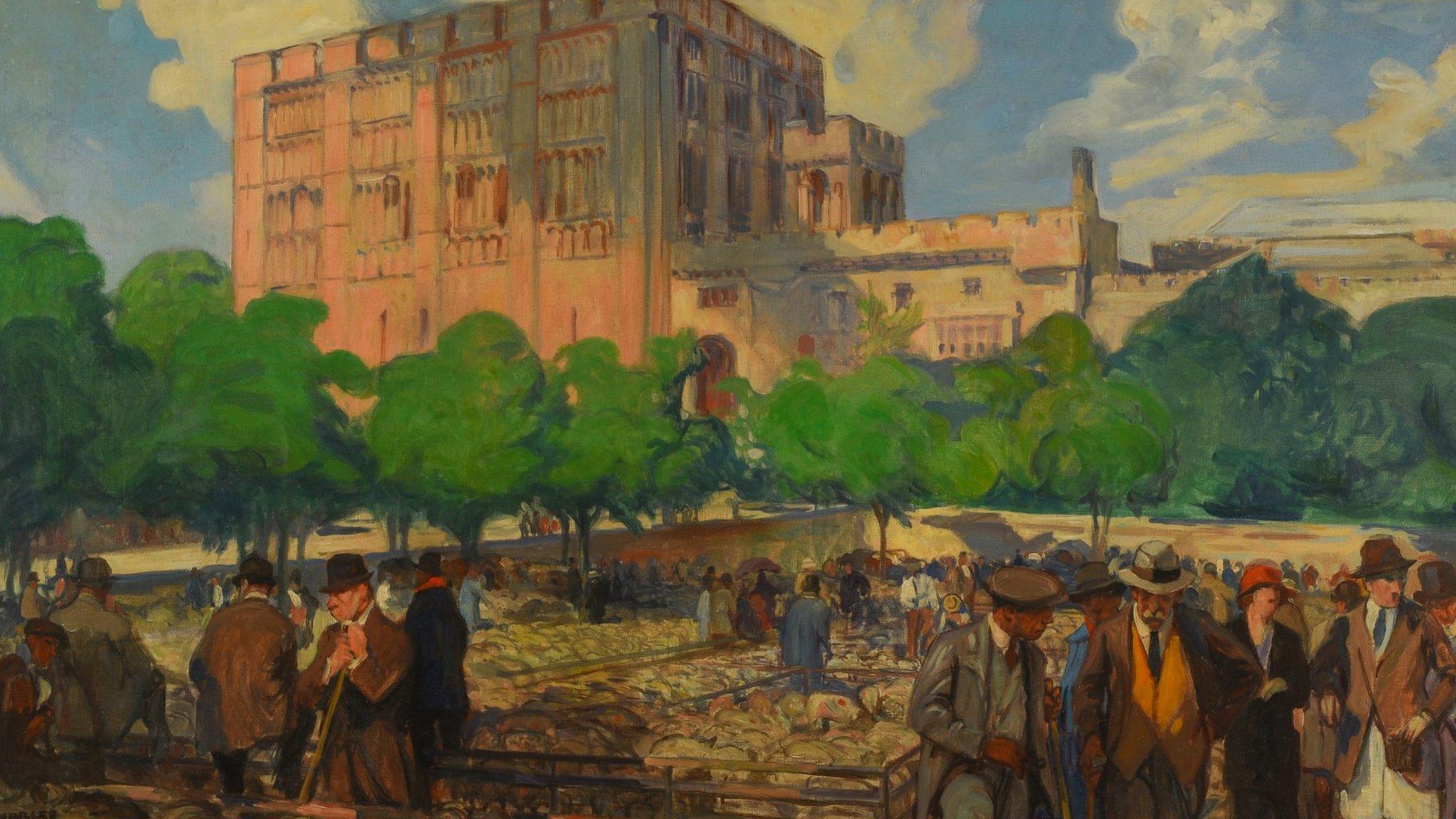Norwich Castle: Dominant building to be restored to former glory
- Published

Plans have been put forward to recreate the medieval Great Hall in the castle keep
A £13.5m project to restore a castle as a 12th Century royal palace is to begin later this year.
Work on Norwich Castle first began just after the 1066 Norman Conquest when 98 Saxon homes were demolished to create a huge man-made fortified mound.
The castle dominated the countryside for miles around as a royal palace, then as a prison and later a museum.
Norfolk County Council is to select a contractor to restore the castle to its former glory at a meeting on 10 June, external.
The council wants to open up the stone castle's keep "from basement to battlements" to uncover its lost secrets.

The castle stands on a huge man-made mound in Norwich city centre on the site of 98 demolished Saxon homes
Excavations of earthworks under the keep have already shed light on the medieval diet and way of life of the castle's residents.
Boreholes have penetrated to a layer of dark soil which may be the level of the Saxon homes.

New exhibition space is being planned for the museum

The keep already has a museum and art gallery but more levels are to be introduced
Margaret Dewsbury, cabinet member for communities and partnerships, said: "Once complete, it will be the most accessible grade one-listed medieval castle in Europe, boosting the county's economy with 300,000 visitors per year."
The Norwich Castle: Gateway to Medieval England project will recreate the 12th Century Norman royal palace, create a British Museum gallery looking at the medieval period, an early-years learning facility and provide a rooftop viewing platform.
About £8.7m of the funding comes from the National Lottery with the rest coming from the council (£2.2m), and the rest from trusts, foundations, central government and private companies, organisations and individuals.
"Visitors will see the sights and hear the sounds of Norwich Castle during its heyday as a royal palace," a council spokesman said.
"The Norman Great Hall will be transformed to show the lavishly-decorated room Henry I would have seen when he visited in 1121.
"Visitors will be able to climb the spiral stone stairs to a walkway the Normans built high into the walls and enjoy the spectacular view over the King's Chamber and Great Hall."

The keep has dominated the city centre skyline since it was built in the 12th Century

Norwich Castle - select dates
1067 - William the Conqueror orders about 98 Saxon homes to be demolished to build a tall castle earthworks and deep defensive ditches
1094 - Work begins on the stone keep by William (Rufus) II with much larger earthworks to support its huge weight. Limestone is shipped from Caen in France
1345 - The castle becomes a legal centre and it is used as a prison for the next 500 years
1884 - Plans are approved for a new prison at Mousehold Heath and the Norfolk & Norwich Museum moves to the castle
- Published8 November 2018

- Published3 October 2018

- Published9 February 2018

- Published19 February 2015
